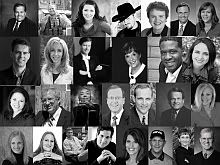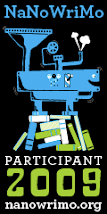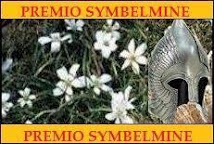The other afternoon I met Suzanne, a photographer at the beginning of her creative photography career. She had a tripod, a decent camera, a good eye for a photo, and a few questions - which I tried to answer. And that got me thinking... I realized that I have never posted about photographic technique. So... here are a few tips and tricks. Thanks for the inspiration Suzanne!
I'll start at the beginning with the basics and then proceed to the more complicated.
STILL PHOTOGRAPHY 101 - Part 1
Theory: Let's begin with a question. What is still photography? My definition is this: Still photography is the process of capturing and preserving a small slice of light with the intention of having that slice be pleasing to the eye. What do you think?
I like the medium of still photography because it allows me to do what no physicist can do... stop time. A small bit of light enters the lens of my camera and I fire the shutter. If my shutter has stayed open for the right amount of time, I have a properly exposed photograph.
Let's talk for a minute about exposure. There are three components or factors to photographic exposure: 1. Shutter Speed, 2. Aperture (often called f-stop), & 3. ISO (often called ASA).
1. Shutter Speed - Cameras can open their shutters for whole seconds and for fractions of a second. Professional camera shutter speeds range from 1/12000th of a second to 30 seconds to BULB. The BULB setting means that the shutter remains open for as long a time as the operator wants it to be open - and that can be as much as several hours or as little as 31 seconds. If you were to take a two hour photographic exposure, for example, the light levels would have to be less than you could see with your naked eye or else the photo would be over-exposed.
In order to hand hold an average camera with a standard lens (I'll talk more about lenses later) and have the shutter speed last for a short enough duration so the photo will not show camera shake, the shutter speed needs to be faster than 1/60th of a second. If you want to take a longer exposure or if you want to use a telephoto or closeup lens, then a tripod is recommended. In the absence of a tripod, leaning the camera on a ledge, a knee or a sturdy upright support might provide enough stability to get the shot.
Shutter speeds are offered in such a way that there are full jumps and then either half or 1/3 jumps in between - all for the purpose of controlling the light more precisely. Beginning at 1 second, full jumps are as follows: 1sec - 1/2sec - 1/4 - 1/8th - 1/15th - 1/30th - 1/60th - 1/125th - 1/250th - 1/500th - 1/1000th - 1/2000th of a second - etc. Each full jump in shutter speed, 1/30th up to 1\60th for example, cuts the light reaching the film plane (or digital sensor) in half. As an example, a shutter speed of 1/15th allows 8x more light to reach the film plane than does a shutter speed of 1/125th of a second.
2. Aperture - Aperture, or f-stop, is the measure of the size of the light's pathway through a lens to reach the film plane or digital sensor. Aperture is like the pupil in your eye - it gets bigger or smaller depending on the light intensity.
As a general rule, the bigger the diameter of the lens, the more light that is available to make the photograph and, as a result, the better the photo quality. The farther away the lens is from the back of the camera the bigger the lens needs to be. For this reason, tiny point and shoot cameras are thin with small lenses and SLR's are thick with big lenses. (SLR stands for single lens reflex, or cameras that show in the viewfinder the exact scene that the lens sees.)
As a general rule, the bigger the diameter of the lens, the more light that is available to make the photograph and, as a result, the better the photo quality. The farther away the lens is from the back of the camera the bigger the lens needs to be. For this reason, tiny point and shoot cameras are thin with small lenses and SLR's are thick with big lenses. (SLR stands for single lens reflex, or cameras that show in the viewfinder the exact scene that the lens sees.)
F-stops are expressed in "f" numbers. Expensive zoom lenses may have a maximum f-stop of 2.8, while cheaper models might be limited to f4 or f5.6. These numbers may sound confusing, but the learning curve isn't all that bad. The rules are easy enough.
a. The larger the f-number, the less light the lens is able to gather.
b. The smaller the number, the more light the lens is able to gather.
c. The larger the f-stop, the more depth range of the photograph that is in focus, or in photographic lingo, the more depth of field there is.
d. The smaller the f-stop, the less depth of field.
e. There are full f-stops (f1.2 - f2 - f2.8 - f4 - f5.6 - f8 - f11 - f16 - f22 - f32) and there are half stops or even 1/3 stops, depending on the camera. The important thing to remember is that every time you change the setting by one full stop, you either double the light reaching the film plane or cut the light in half. For example, the difference in the amount of light getting into the camera at f2.8 as opposed to f8 is 8x less at f8 than it is at f2.8. Switching from f8 down to f16 means that 4x less light will reach the film plane. If you measure from f2.8 to f16, the difference in the amount of light reaching the film plane is 32x more at f2.8 than it is at f16.
a shutter speed of 1/125th and an f-stop of f-8 will still be perfectly exposed when shot at 1/60th and f11 or at 1/1000th & f-2.8. The difference in the photographs (assuming all three shots were taken in focus with the same lens and without camera shake) will be in the depth of field - the amount of front to back area in the photograph that is in focus.
3. ISO (often called ASA) - ISO is the measure of the film or digital sensor's sensitivity. Common ISO settings are 100 - 200 - 400 - 800. Each of these sensitivity numbers corresponds to one f-stop or to one full jump in shutter speed. Consequently, ASA (ISO)100 requires twice as much light to expose the digital sensor properly as ASA200 would, etc, etc. Now you may be asking the obvious, "If I can use a much faster shutter speed at ISO800 than at ISO100, then why wouldn't I just shoot all my pictures at 800"? A good question! The answer is that the higher the ISO, the more the image quality degrades. If you want a grainy look in your picture, like you might want to create in a soft, close up portrait, then by all means shoot at ISO800, 1600, 3200, 6400 or even ISO12800. Your shutter speeds will be higher, and if you are outside, your aperture will have to be a high f-number too (resulting in a lot of depth of field).
In conclusion to Part 1, manipulating ISO, Shutter Speed & F-stop allow you to create different effects of the same image that you are looking at. If you want to freeze action, for example, then use a higher ISO and a faster shutter speed (a shutter speed of 1/1000th of a second will freeze most action). If you want to take a panning shot with a kid on a speeding bicycle going past you, for example, (panning is when you swing the camera and track the object you are photographing), and as a result, streak the background but keep the object sharp, then you will want to use a slower shutter speed and a lower ISO. For pan shots, 1/15th of a second up to 1/60th usually work well, depending on how fast the object is moving. When you pan, just try to keep the part of the image you want in focus in the same place in the viewfinder as you snap the photo.
In conclusion to Part 1, manipulating ISO, Shutter Speed & F-stop allow you to create different effects of the same image that you are looking at. If you want to freeze action, for example, then use a higher ISO and a faster shutter speed (a shutter speed of 1/1000th of a second will freeze most action). If you want to take a panning shot with a kid on a speeding bicycle going past you, for example, (panning is when you swing the camera and track the object you are photographing), and as a result, streak the background but keep the object sharp, then you will want to use a slower shutter speed and a lower ISO. For pan shots, 1/15th of a second up to 1/60th usually work well, depending on how fast the object is moving. When you pan, just try to keep the part of the image you want in focus in the same place in the viewfinder as you snap the photo.
Photography is about effect, expression and creativity, so have fun. Don't be afraid to experiment - especially if you have a digital camera. If you have a happy accident, remember what you did so you can do it on purpose the next time. Just remember that shutter speed, f-stop and ISO are all related and can be combined like cream, sugar and butter to make the perfect icing for your carefully prepared masterpiece.
In Part 2, I'll talk about either composition or lenses - or perhaps both. Composition has my heart, but lens choice can make all the difference. Knowing how to use a cheap lens can make your photos very good with just a little know how. Stay tuned...
And thanks for tuning in this time.








